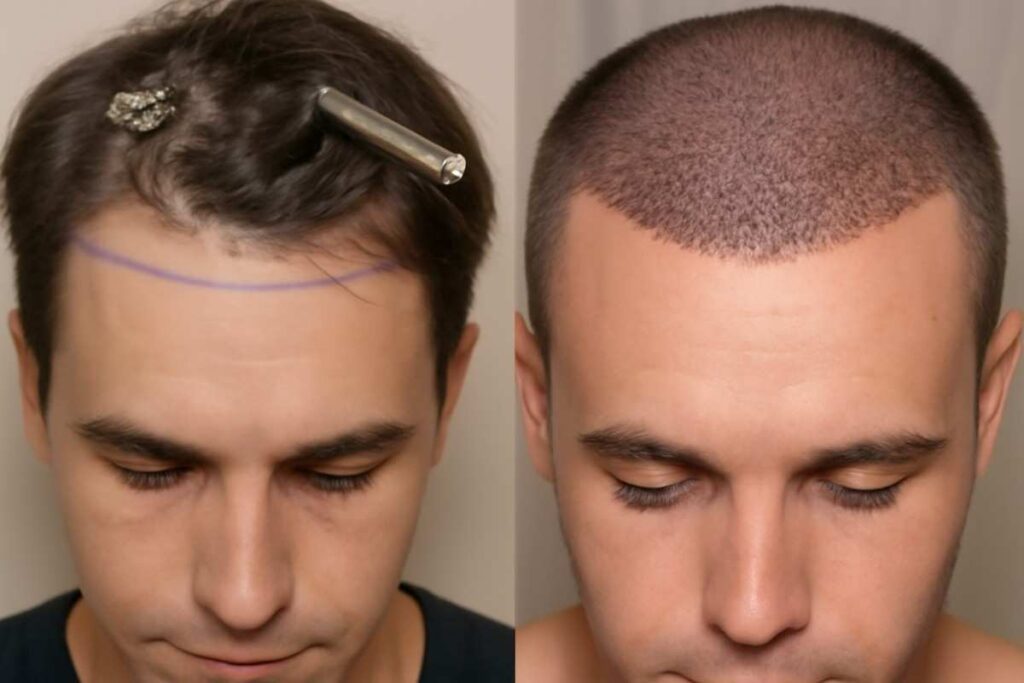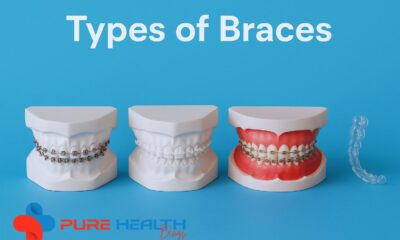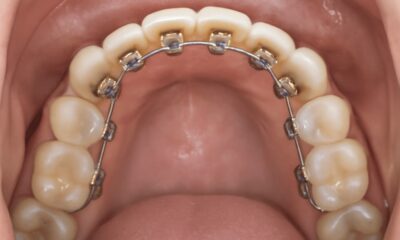General Health & Wellness
How Painful Is Forehead Reduction Surgery Really?
Explore how painful forehead reduction surgery is, what recovery involves, cost breakdown, and tips for achieving natural, balanced results.

Forehead reduction surgery, also known as hairline lowering surgery or forehead reshaping, is becoming increasingly popular for individuals seeking to address a high forehead or achieve better facial balance. Many people are concerned about the pain and recovery process associated with this procedure, especially if it involves delicate areas like the scalp and hairline. If you’re considering cosmetic forehead surgery, understanding the pain level, recovery time, and potential complications is essential for making an informed decision.
This guide will explore forehead reduction pain levels, healing timelines, cost factors, and the benefits of facial balancing surgery. You’ll also learn about natural-looking results, the healing process, and much more.
Understanding Forehead Reduction Surgery:
What Is Forehead Reduction Surgery?
Forehead reduction surgery is a cosmetic procedure designed to lower the hairline and reduce the size of the forehead. Often performed as part of Forehead Reduction Surgery, it is particularly sought by individuals with a high forehead who feel that their facial proportions are out of balance. The procedure involves removing a portion of the scalp and reshaping the forehead to create a more harmonious appearance.
During the surgery, the hairline is moved downwards, and excess skin is excised. This can help patients achieve a more natural, feminine hairline, enhancing facial symmetry. The surgery also addresses concerns like a large forehead and improves overall facial aesthetics.
The Procedure of Forehead Reshaping
Forehead reshaping is typically performed under local anesthesia combined with sedation to ensure that the patient remains comfortable and relaxed during the procedure. The surgeon will carefully plan the hairline lowering to achieve a natural, proportional look that complements the individual’s facial features. Depending on the specific needs of the patient, the surgery may involve a scalp incision across the forehead or hairline.
For some patients, brow lift procedures may also be combined with forehead reshaping for a more comprehensive transformation. This can help improve brow position, offering additional refinement in facial features.
How Painful Is Forehead Reduction Surgery?
Forehead reduction surgery is generally considered a low-pain procedure, especially with the help of local anesthesia. However, patients may still experience some discomfort during the healing process, which is normal. Let’s take a closer look at the pain level and what you can expect post-surgery.
Forehead Reduction Pain Level
While forehead surgery discomfort varies from person to person, the pain level associated with the procedure is generally mild. Local anesthesia ensures that the area being operated on remains numb, so most patients do not feel pain during the procedure itself. However, after the anesthesia wears off, patients may experience soreness and tightness around the scalp.
The degree of pain will depend on the extent of the surgery and the individual’s pain tolerance. In general, mild soreness and swelling are common after the procedure and can be managed with over-the-counter pain relief or medications prescribed by your surgeon.
Is Forehead Reduction Painful Immediately After Surgery?
Most patients experience post-op forehead tightness and swelling after forehead surgery, which can last for several days. The pain is typically mild to moderate and can be controlled with pain medications prescribed by your doctor. You may feel some discomfort around the hairline as the scalp heals, but this should improve after a few days.
The discomfort generally decreases significantly within the first 48 hours, and swelling will start to subside over the course of 1 to 2 weeks. Patients often report that the discomfort is more about tightness and pressure than sharp pain.
Swelling and Recovery Time for Hairline Lowering Surgery
The recovery process following forehead reduction surgery is crucial to achieving the best possible results. While the healing process may take a few weeks, most individuals can expect to return to regular activities within a relatively short time.
Swelling After Forehead Surgery
One of the most common side effects of forehead reduction surgery is swelling, which typically peaks within the first 48 to 72 hours after the procedure. Swelling around the forehead and hairline is normal and usually resolves in about 7 to 10 days. To help manage swelling, patients are advised to keep their head elevated and apply cold compresses to the area for the first few days.
Recovery Time for Hairline Lowering Surgery
The majority of the recovery time for hairline lowering involves swelling reduction and scar healing. The initial recovery phase lasts about 1 to 2 weeks, during which time you may need to avoid strenuous activities, including exercise and lifting heavy objects. Most patients can return to work within 7 to 10 days, but it’s important to follow your surgeon’s advice regarding activity limitations.
While the external appearance of the scalp may improve relatively quickly, full healing of the scalp incision and the underlying tissue may take up to 3 to 6 months.
Cost of Forehead Reduction Surgery
Understanding the cost of forehead reduction surgery is essential for budgeting and decision-making. The price can vary depending on several factors, such as the surgeon’s experience, the geographic location of the practice, and the type of procedure performed.
Forehead Reduction Surgery Cost and Financing Options
On average, the cost of forehead reduction surgery ranges between $3,000 and $7,000, depending on the extent of the procedure and the type of anesthesia used. Hairline lowering surgery typically costs between $2,500 and $5,000. Prices can vary based on factors like the complexity of the surgery, the surgeon’s experience, and the location of the practice.
Many practices offer financing options like CareCredit or in-house payment plans to make the cost more affordable. It’s important to inquire about the full price during your consultation, as some fees might not be included in the initial estimate.
Is Forehead Surgery Covered by Insurance?
Cosmetic forehead surgery is generally not covered by insurance, as it is considered an elective procedure. However, if the surgery is deemed medically necessary (e.g., to correct a deformity caused by injury or congenital conditions), it may be covered by some insurance plans. Be sure to contact your insurance provider and discuss the specifics of your surgery before proceeding.
Candidacy for Forehead Reduction Surgery
Forehead reduction surgery is suitable for individuals who have a high forehead or feel that their facial proportions are out of balance. While the procedure can improve facial symmetry, not everyone is a candidate.
Am I a Candidate for Forehead Reduction?
To be considered a good candidate for forehead reshaping, you must have healthy scalp tissue and good skin elasticity. It’s important that you discuss your overall health with your surgeon to ensure there are no contraindications for the surgery. In addition, your personal cosmetic goals should align with what is achievable through surgery.
Scalp Laxity Requirements
Having adequate scalp laxity is essential for successful forehead reduction. Scalp laxity refers to the looseness of the skin on your forehead, which is necessary for safely lowering the hairline. Your surgeon will assess your scalp’s flexibility before recommending hairline lowering surgery.
Risks and Safety Considerations in Forehead Surgery
Like any surgical procedure, forehead reduction surgery carries certain risks and safety concerns. While it is generally safe when performed by an experienced surgeon, it’s important to be aware of potential complications.
Risks or side effects of Forehead Reduction Surgery
Risks or side effects of forehead reduction surgery include infection, scarring, nerve damage, or an uneven hairline. In rare cases, some patients may experience hair loss around the treated area, which could affect the appearance of the hairline. To minimize these risks, it’s essential to choose a skilled surgeon with experience in hairline lowering procedures.
Safe Forehead Surgery Options
To minimize risks, ensure that your surgeon is certified by reputable organizations, such as the American Board of Plastic Surgery or the American Academy of Facial Plastic and Reconstructive Surgery. Additionally, discuss the potential risks and complications during your consultation to make an informed decision.
Alternatives to Forehead Reduction Surgery
For individuals who are hesitant about forehead surgery, there are several alternatives, including non-surgical options. Depending on your goals and preferences, hair transplants or brow lifts may be viable alternatives.
Forehead Reduction vs. Hair Transplant
A hair transplant may be a suitable option for individuals who want to address a high hairline without undergoing forehead reduction surgery. A hair transplant involves the relocation of hair follicles from one part of the scalp to the area around the hairline to create a more natural look. While forehead surgery offers more immediate and dramatic results, a hair transplant is a longer process with gradual results.
Brow Lift and Forehead Reduction
A brow lift may be combined with forehead reduction surgery for those who want to address sagging brows along with a high forehead. The brow lift focuses on repositioning the eyebrows, giving the face a more youthful, rejuvenated look. Combining both procedures can enhance overall facial aesthetics and improve symmetry.
Before and After: What to Expect from Forehead Reduction

Understanding what to expect before and after forehead surgery is key to achieving the best results.
Forehead Reduction Before and After
Before surgery, you should have a clear understanding of the goals you wish to achieve, whether it’s lowering the hairline or achieving facial symmetry. After the surgery, expect some swelling and discomfort, which should subside in a few days. With proper care, the results should be permanent, providing you with a more balanced, youthful-looking face.
When Does Swelling Go Down?
Swelling is most prominent during the first 3 to 5 days after surgery. It will gradually subside over the course of 1 to 2 weeks. The majority of patients see significant improvement in swelling within the first 2 weeks post-surgery.
Conclusion: Forehead Reduction Surgery for a Balanced Look
Forehead reduction surgery offers a transformative way to address high foreheads and unbalanced facial proportions. While the procedure may involve some discomfort and recovery time, the results are generally long-lasting and worth the investment for those seeking improved facial aesthetics.
By understanding the cost, healing time, and potential risks, you can make a well-informed decision about whether forehead reshaping is right for you. With the right surgeon and careful planning, you can achieve the natural-looking hairline you’ve always wanted.
Expert Opinion
As a professional in the field of cosmetic surgery, I have seen firsthand how forehead reduction surgery can improve the balance of facial features. In my experience, the pain associated with this procedure is minimal, thanks to the local anesthesia and sedation provided. Most patients report feeling tightness and discomfort in the first few days, but these symptoms are manageable with pain medication.
The healing process is relatively quick, with most patients seeing visible results within 2 weeks. However, it’s crucial to follow your surgeon’s aftercare instructions to ensure the best results and avoid complications like swelling or uneven hairlines. Choosing a skilled surgeon and carefully discussing your cosmetic goals will ensure that the outcome is as natural and pleasing as possible.
This comprehensive guide has provided all the details you need to make an informed decision about forehead reduction surgery, and we pure health blogs encourage anyone considering it to consult with a board-certified plastic surgeon to discuss their specific needs and concerns.
FAQs regarding forehead reduction surgery
Q1. Is forehead reduction safe?
Yes, forehead reduction surgery is generally safe when performed by an experienced, certified surgeon. Like any surgery, there are risks, but complications are rare when proper precautions are taken.
Q2. How long is recovery?
The recovery time for forehead reduction surgery typically takes 1 to 2 weeks for initial healing, but full recovery, including scar healing, may take 3 to 6 months.
Q3. Who is a candidate?
Good candidates are individuals with a high forehead or uneven hairline. You should have healthy scalp tissue and good skin elasticity for a successful outcome.
Q4. How long to see results?
Results are visible within 2 weeks, once swelling and discomfort subside. Full results can take up to 6 months as the scalp fully heals and the hairline settles into its new position.
Q5. How painful is a forehead reduction?
Forehead reduction surgery is generally not very painful, as local anesthesia is used. You may feel tightness or soreness in the days following the procedure, but pain is usually manageable with medication.
Q6. Forehead reduction surgery cost?
The forehead reduction surgery cost typically ranges from $2,500 to $7,000 depending on the surgeon, location, and the complexity of the procedure.
Q7. Is forehead reduction surgery safe?
Yes, when performed by a skilled and board-certified surgeon, forehead reduction surgery is generally very safe. As with any surgical procedure, discussing potential risks with your surgeon beforehand is crucial.
-

 General Health & Wellness3 months ago
General Health & Wellness3 months agoCan Stress Cause Hemorrhoids? Myth or Medical Reality?
-

 Men & Women's Health2 months ago
Men & Women's Health2 months agoLatest Types of Braces: Unexpected Costs, Benefits & Best Treatments
-

 Mental Health2 months ago
Mental Health2 months agoThe Silent Panic Attack Trap That’s Hurting Millions Now
-

 Diet & Nutrition3 months ago
Diet & Nutrition3 months agoRare Lemon Balm Benefits That Will Calm Your Mind & Heart
-

 Diet & Nutrition3 months ago
Diet & Nutrition3 months agoHow to Make a Lemon Balm Tea for Effective Weight Loss
-

 Men & Women's Health3 months ago
Men & Women's Health3 months agoComplete Truth About Lingual Braces Costs, Benefits And Care
-

 Recipes4 months ago
Recipes4 months agoHow to Make Melissa Tea at Home: A Step-by-Step Guide
-

 General Health & Wellness4 months ago
General Health & Wellness4 months agoIs Your Unusual Heel Pain a Scary Serious Problem?









































